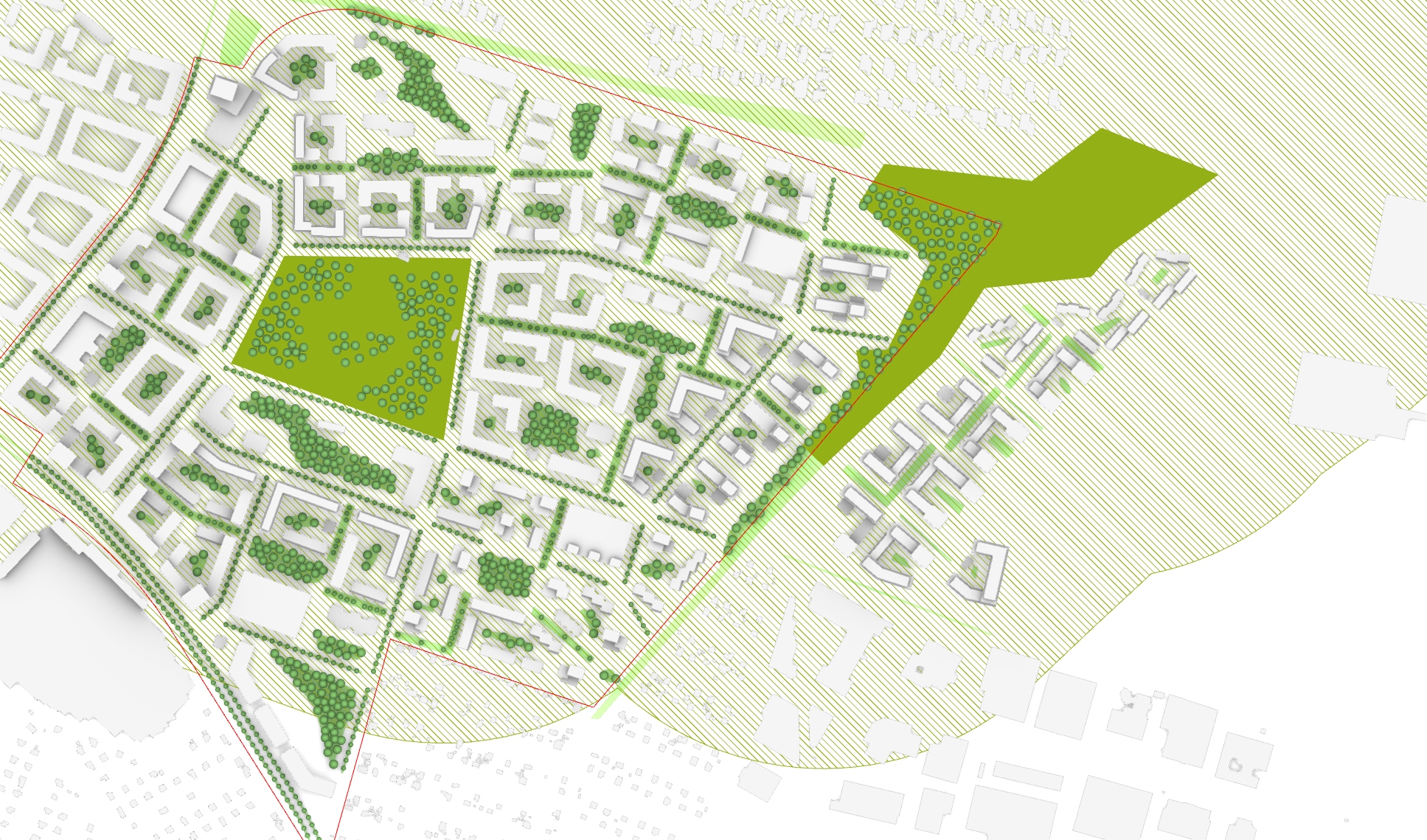2023-06-08
FOJAB's design tool ensures green views in new neighborhoods
Seeing trees from your window is good for your health - but how can we make sure that newly built homes have enough green views and new neighborhoods have enough greenery? FOJAB is developing a tool that is currently being tested in the new Jägersro district in Malmö.
Greenery is good for human well-being and has a range of proven health benefits. Greenery is also important for biodiversity, trees reduce the temperature in cities, reduce stormwater runoff during heavy rainfall, reduce noise and improve air quality.
Many cities have both parks, urban nature and residential greenery, but the green areas tend to decrease when buildings are densified. The 3-30-300 rule is a measure of greenery that has been disseminated both nationally and internationally in the planning of healthy cities. It states that everyone should be able to see at least 3 trees from their home, each city block should have at least 30% canopy coverage and all residents should have a maximum of 300 meters to a green area. But how do you go about achieving these goals in practice?
FOJAB has developed a tool based on the 3-30-300 rule for the design of new blocks or neighborhoods. With the help of FOJAB's tool, you can see the distance to green areas, the predicted crown coverage in an area and get an idea of the amount of greenery from the windows of the proposed residential buildings - and adapt the design accordingly. The view is graded from 0 to 5, with 5 meaning that the entire field of view is covered by trees and 0 meaning no view of trees at all.
- In the early stages, these are not exact truths, but if you get 0 on one side of a building and 5 on the other, it is an indication that the building should perhaps have apartments throughout. Or that the side without a tree view should contain non-residential activities," explains Simon Kallioinen, an architect at FOJAB who developed the tool.
FOJAB's 3-30-300 tool is now being tested for the first time at Jägersro, a district in Malmö that will be developed with more than 4000 new homes, workplaces, shops, schools and preschools. Property owner SMT Malmö Exploatering's ambition is for Jägersro to become the most sustainable district in the Öresund region, with a strong focus on green environments. Åsa Samuelsson, architect at FOJAB, talks about some of the insights gained:
- The crown coverage rate is the most difficult to achieve and 30 percent is very high. It is also a challenge to define the size of tree crowns in a developing neighborhood where the trees have not yet been planted. Should you measure the crown of a tree that is newly planted, ten years old or thirty years old? This of course affects the result.
- But regardless of the definition, the tool gives an early and good indication of which parts are working well and which parts need extra attention. Do we need to build bigger blocks to get more trees in the yards? Or build mobility houses instead of parking garages to enable large volumes of trees in the courtyards? Maybe we should lower the buildings in some parts of the block for the sake of the view.
- We should also not forget that people may not only want shade. Some people also want to get some sun," says Anders Hall, CEO of SMT Malmö Exploatering AB. The next step is to link carbon dioxide calculations to the tool. "If you can quickly calculate an estimate of how much carbon the trees bind and clearly see the positive climate effects we are building into the district, it would really help us to achieve the vision of the most sustainable district in the Öresund region.
